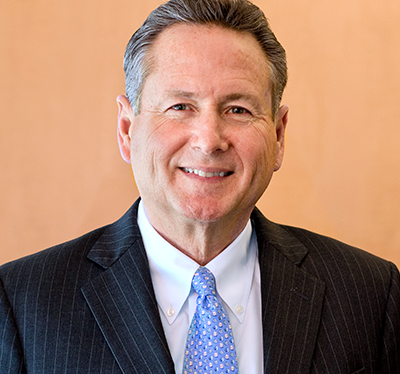2020 CEOs Who 'Get It'


James D. Hoffman
President and CEO
Reliance Steel & Aluminum Co.
Los Angeles
Reliance Steel & Aluminum Co. is the largest metals service center company in North America, employing more than 15,000 workers. Through a network of more than 300 locations in 40 states and 13 countries, Reliance provides value-added metals processing services and distributes a full line of 100,000-plus metal products to more than 125,000 customers in a broad range of industries.
Why is safety a core value at your organization?
As a family of companies, it is our greatest obligation – and moral responsibility – to keep our entire family of more than 15,000 employees across 300-plus locations safe. Moreover, having a skilled and engaged workforce simply makes good business sense. While safety is everyone’s responsibility, our management team believes in and promotes this essential message every day.
Describe your personal journey to becoming a CEO who “gets it.” What experiences or lessons brought you to where you are now?
Growing up in Pittsburgh, it was common for college students to work in the steel mills during summer breaks. My experience in the mills gave me firsthand knowledge of what an unsafe working environment might look like. As my career in the metals industry began and progressed from sales to operations, and ultimately to management, I always made it a point to walk the plant floor to observe working conditions and be actively involved in safety programs. It only takes seeing one person get hurt – and the ripple effect the injury has on the injured colleague’s family and co-workers – to make safety truly personal. As COO and now CEO at Reliance, it has been – and continues to be – my personal priority to do all I can to support the success of our safety programs and ensure we move metal safely. I want all of us to take safety personally.
What is the biggest obstacle to safety at your organization, and how do you work to overcome it?
Like many organizations, complacency is a common culprit. People get good at doing their jobs and, after a number of years, can start taking simple but important safety precautions for granted. Reliance combats complacency with our SMART Safety program, which promotes peer-to-peer accountability and engagement. Our Corporate Safety Team holds regional symposiums and shares tools and innovative training approaches. We have an internal mentoring program in which companies can observe and learn best practices from one another. We also fight complacency by continually investing in cutting-edge equipment. Our employees are eager to learn about and operate the newest technologies and take great pride in the products they help produce.
How do you instill a sense of safety in employees on an ongoing basis?
Our peer-to-peer SMART Safety program – entering its fourth year – is all about making safety real to each and every employee, whether on the warehouse floor, behind the wheel or in an office setting. Each year’s theme (Our Safest Year Yet; Be a SMART Hero; One Family, One Culture of SMART Safety; Make it Personal) is intended to appeal to an overarching ideal of safety. In the workplace, we encourage reporting and resolution of near misses. All of our employees have a voice in their own and one another’s safety. We recognize our “safety influencers” and our subsidiary companies’ accident-free records by featuring them on our companywide intranet.
How does your organization measure safety? What are the leading indicators that show you how safe your organization is, and where do you see room for improvement?
In the past, we have focused on OSHA recordables, self-reporting, TRIR and DART. While those are still important objective measures, in 2020, we are rolling out our SMART Observations System, where we will be able to capture near misses, positive observations and hazard resolutions in real time.
What role does off-the-job safety play in your organization’s overall safety program? What types of off-the-job safety and health programs does your organization offer to employees?
The Reliance approach to safety is holistic – everything is connected. We believe that safe employees are aware of their actions not just on the job, but also in all other areas of their life, and this cycle repeats itself and spreads peer to peer, shift to shift, location to location and onward across the organization. Our health and welfare benefits – in particular, our companywide wellness program – help foster work-life balance. Participation is above the industry average. Safety goes beyond policy compliance to physical fitness, nutrition and other personal areas, which in turn enables our employees to be positive contributors to both Reliance and the larger communities in which they live.
Post a comment to this article
Safety+Health welcomes comments that promote respectful dialogue. Please stay on topic. Comments that contain personal attacks, profanity or abusive language – or those aggressively promoting products or services – will be removed. We reserve the right to determine which comments violate our comment policy. (Anonymous comments are welcome; merely skip the “name” field in the comment box. An email address is required but will not be included with your comment.)


